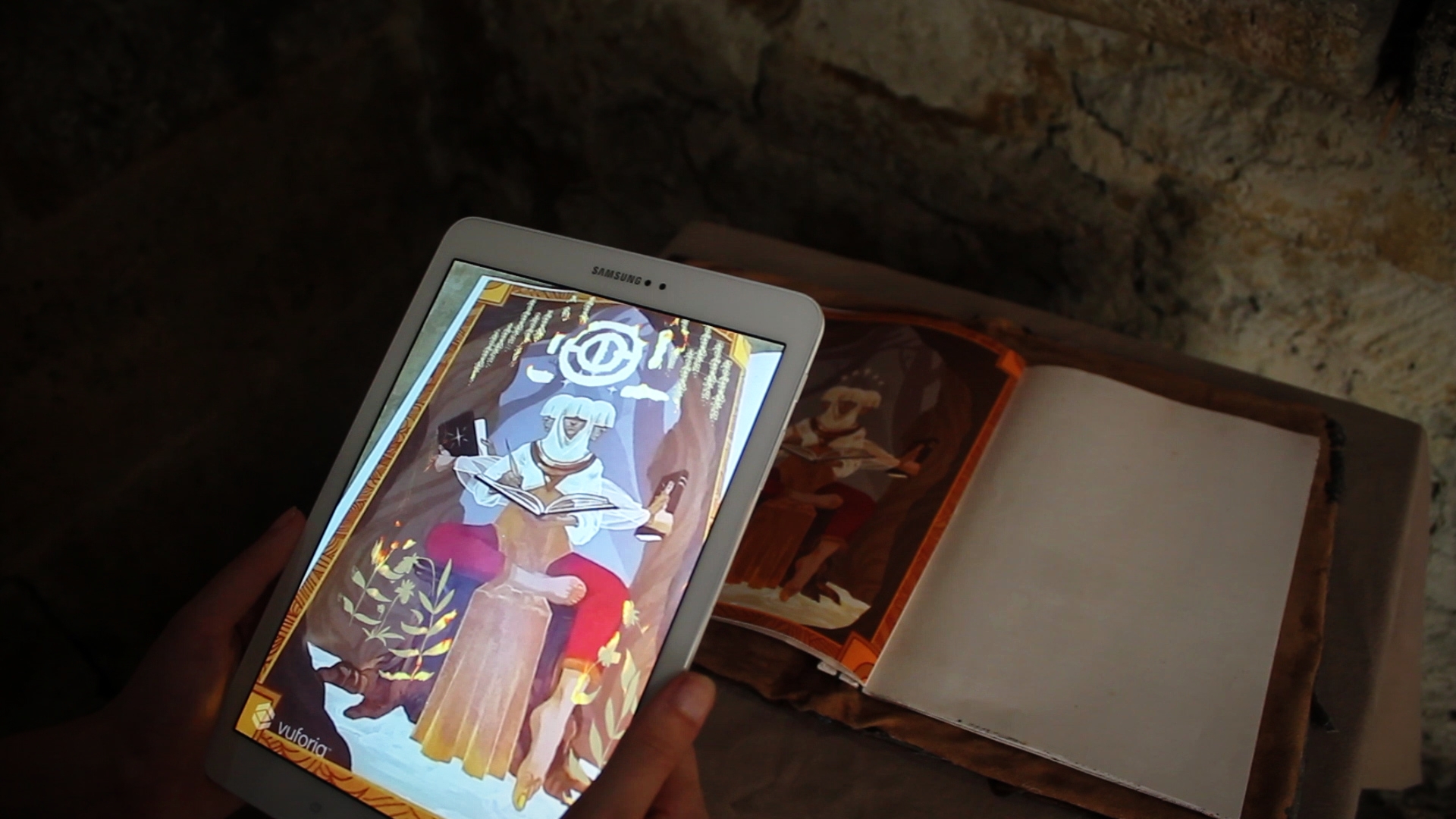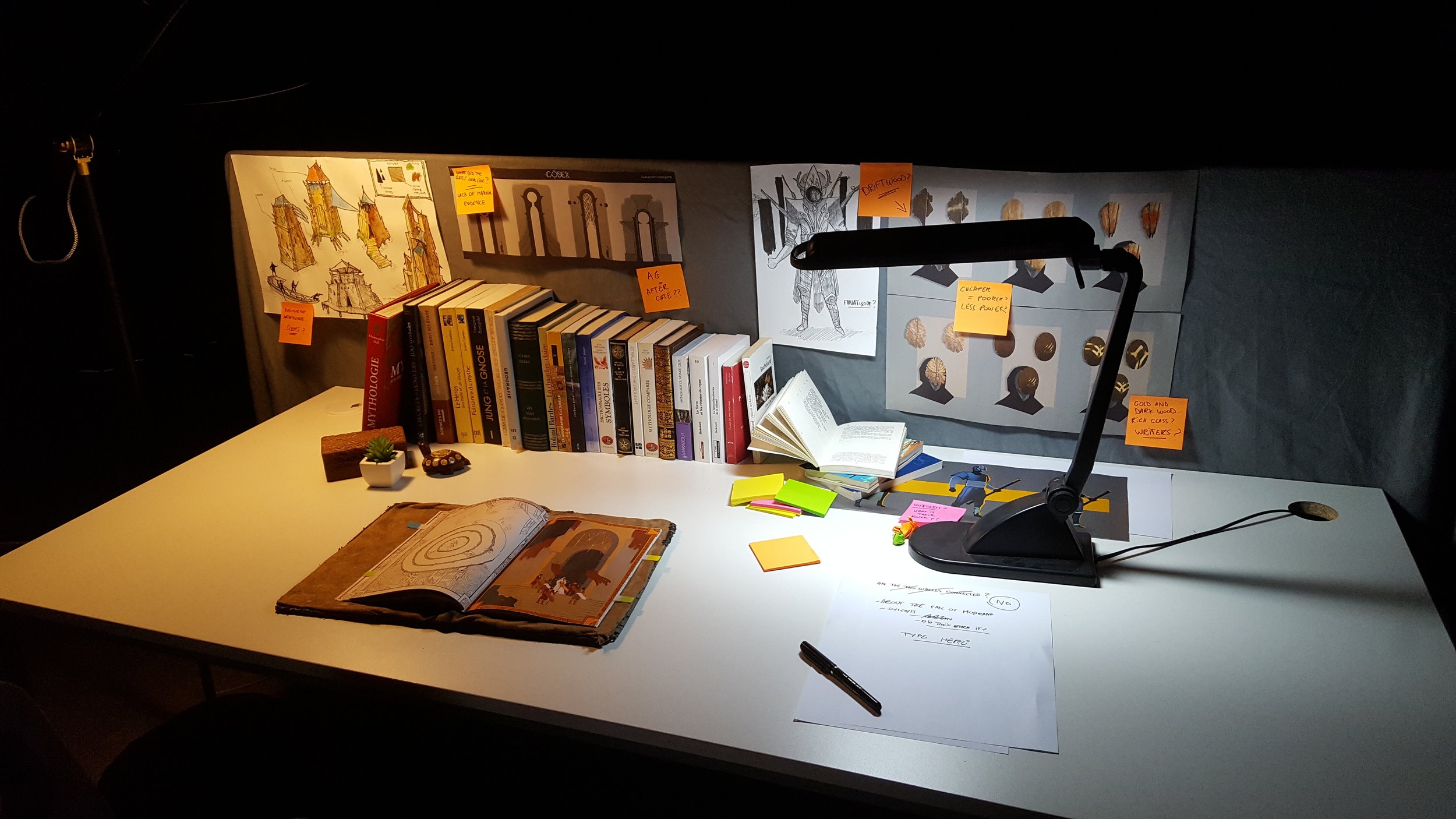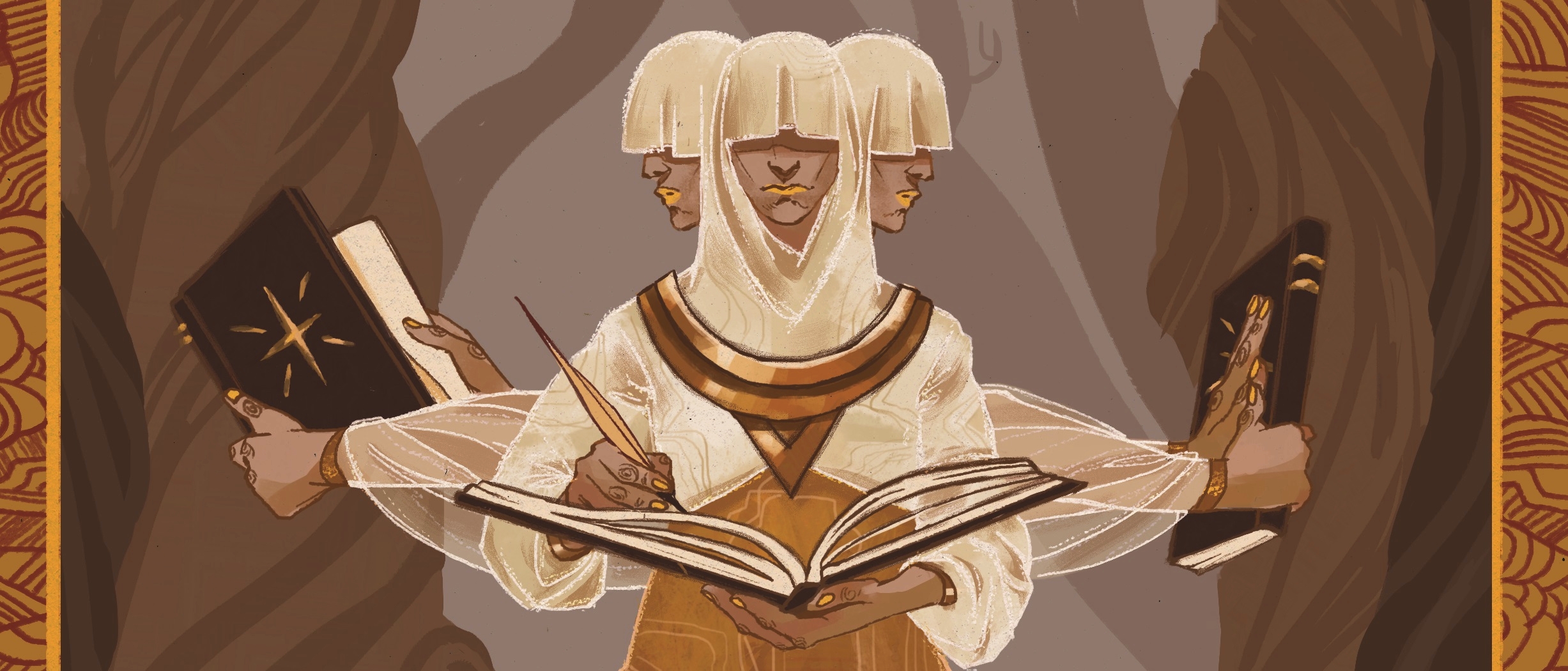
Codex
Team : 6
Position : Game/level/narrative designer, pitcher
Duration : 2 months 1/2 (2018)
Available here
Codex is an AR puzzle/exploration gamebook: this grimoire is the only thing that remains from a long-forgotten civilization. Using their AR device, players are able to dive into a deep universe, decipher hidden truths and unfold what led this society to ruins.

Vision
Making an AR gamebook is an incredible exercice but can prove to be challenging. From the begining of the project, we were very clear of where we wanted to go.
A book-based AR game. This was the begining of everything. We wanted the player to manipulate a tangible artefact embodied with a digital glitz, making a rather unique interactive gamebook.
Discoveries of hidden secrets. With real paper pages hiding secrets revealed by their smartphone, we wanted the player to feel like an archeologist, digging up ancient mysteries about past tragedies.
A deep universe. We built en entire civilization and wanted the player to dive into this carefully designed yet vibrant lost world.

Codex in a nutshell
The purpose of the game is to understand a great mystery: what is this book ? What happened to its writers ?
In order to do so, players can use a high-tech AR device (their smartphone) to decipher the book though various interaction, including scan, 3D manipulation or reveal of unreadable text.
The answer to the mystery is fragmented, hidden through 5 different puzzles/chapters. Upon resolution of a puzzle, part of the truth is unfolded: each chapter is therefore a level itself.
Therefore, The big puzzle is therefore the game itself, and only the player’s interpretation and actions can bring what is hidden back to light.

Puzzle-related mecanics
Our game mecanics involved several scanning interactions
2D element reveal. Scanning an associated page can reveal a hidden symbol, or a specific code unlocking a reward.
Wheel lock. Scanning a page with a wheel lock allows the player to interact with a digital version. They can open it using the right combination, found elsewhere.
3D element reveal. Scanning a drawing can project a 3D representation of an object in AR that can be rotated and manipulated.
3D scene reveal. Codex has several 3D scenes scattered in the book player can dive into to search for clues. They often are the strongest moment of the concerned level as also a rare reward, aesthetically and lorewise.
3D anamorphosis. An obstacle players need to face by moving their phone one the right perspective to recreate a symbol and go further.

Designing the player's progression
Our game space was the book, a tangible object that can be opened at every page. Designing the player’s progression with this in mind was challenging, in addition with the fact that we didn’t have much control over the player’s action toward the book.
Every digital feedback needed to involve AR, but we also wanted the player to be immerged in the book. The balance was delicate in keeping the attention of the players between the two devices, while not let them loose in the experience without knowing what they had to do.
To help the players, we separated the level/puzzles with blank pages and differents frame aesthetics so it could be recognizable. Inside the puzzles, every pages was recognized by our AR software, and we designed our narrative structure in accordance with the fact that any pages could be opened independently.

Worldbuilding and lore
For Codew, we wanted a coherent and meaningfull universe based around words, paper and ink in a damp and confined cave-dwelled city.
Our religious system is based upon the figure of the Triple-God, all-powerfull figure represented by the opening of a book, the writing inside and the closure of it, inspired by the greco-roman Fates and the hindi sound AUM.
Our economical system is also based on words, for words are money. Therefore, the political system, strongly theological, is a cast system based on wealth and available words.
The world of Codex is also strongly inspired by both the cave-dwelled city of Petra, as well as the library of Alexandria. Our fictionnal language is even a mixture of amazigh, greek and finnish.
We also thought of their fashion style, cultural habits, architecture, ideal of beauty and aesthetics, supersitions, traditions … to make this world as believable as possible.

Our narrative structure
Because our lore was so big, we didn’t want to exhaust the player with an cognitive overload. Therefore, I choose for our book to be an non-linear text corpus with lots of different authors, themes and perspectives, instead of a linear story.
I fragmented our content into separate texts, drawings, 3D scenes and 3D objects that can be accessed on every page. This way, the player was able to access them in every order, and make the links between different points of interest to re-create the lore in their head.
This is what we called our principle of suggestion. Codex’s immersion is based on imagination: imagination is strenghten by few and strikefull interactions, and those points of interests are carefully designed to be supported by the device performances.

Writing the book
The book represents a lost corpus that was quickly binded after a catastrophe in order to keep the memory of a specific library, where every manuscript was kept. Therefore, it is full of different authors, perspectives and themes.
I wrote every pages to be as singular as possible, giving glimpses of the past lives that are testimony of their time. Writing the 19 texts in english allowed me to mixing genre (religious texts, drama scripts, recipies, warrants, letters, poems …) as well as styles, to really give more granularity to the book and surprise the player-reader at every new text.
They truly are the set of our game, serving both as immersive substance and clues to some puzzles. The book is also entirely handmade, printed on thick paper and thread-bound with japanese binding.

Despite the fact that the experience is optimal with the real book, here is the link to the downloadable project.
A walkthrough is also available.
All 2D art is designed by Lisa Vigliola
All 3D art is made by Thomas Luke Garcia